Discover the Machame Route: Trekking Highlights, Challenges, and Pro Tips for Kilimanjaro Success
Overview:
The Machame Route, also known as the “Whiskey Route,” is one of the most favored paths to the summit of Mount Kilimanjaro. Celebrated for its scenic beauty and varied landscapes, this route offers a journey through some of the most iconic terrains on the mountain. Starting at the Machame Gate, climbers trek through lush rainforests filled with unique flora and fauna before transitioning to moorlands, characterized by dramatic views of towering cliffs and open skies. The route continues into an alpine desert, eventually reaching the snowy summit at Uhuru Peak.
What sets the Machame Route apart is its excellent acclimatization profile. Climbers follow a “climb high, sleep low” approach, which allows the body to adjust to altitude gradually, significantly improving the chances of a successful summit.
This route is moderately challenging and best suited for adventurous trekkers with some hiking experience. It typically takes 6 to 7 days to complete, giving trekkers enough time to fully immerse themselves in the journey while also adapting to the high altitude.
Beyond the physical challenge, the Machame Route is an emotional and visual spectacle. From the awe-inspiring sunrise over the clouds at Stella Point to the camaraderie of fellow climbers and the rich cultural interactions with local guides and porters, every step of the journey is a story waiting to be told.
Whether you’re chasing the thrill of adventure, seeking personal accomplishment, or simply drawn to the allure of Africa’s highest peak, the Machame Route offers an unforgettable Kilimanjaro experience.
When deciding between the 6-day and 7-day Machame Route, experts consistently recommend the 7-day option for the best experience and higher success rates. Here’s why:
Why Choose the 7-Day Machame Route?
Better Acclimatization
Increased Success Rates
Enhanced Experience
Considerations for the 6-Day Route
Expert Advice
If you have the time and budget, the 7-day Machame Route is the better choice. It offers a safer, more enjoyable trek with a greater likelihood of reaching Uhuru Peak. The 6-day route is only recommended for experienced hikers who are confident in their ability to handle the altitude and rigorous schedule.
In the end, both routes offer an incredible adventure, but the 7-day itinerary ensures a more comfortable and rewarding journey to the roof of Africa
The Machame Route is renowned for its relatively high summit success rate compared to other Kilimanjaro routes, largely due to its excellent acclimatization profile.
Success Rates
Factors Influencing Success
Welcome to Tanzania! Upon your arrival at Kilimanjaro International Airport (JRO), a friendly Shiri Adventures representative will greet you and assist with your transfer to your hotel. Relax and settle into your comfortable accommodation, which offers all the essentials you need: Cozy Rooms: Rest well after your journey. Hot Showers: Refresh yourself and unwind. Wi-Fi Access: Stay connected with loved ones. Swimming Pool: Take a dip and start your adventure with relaxation. In the evening, you'll attend a detailed briefing with your guide, ensuring you're fully prepared for the incredible journey ahead. This is also the perfect time to ask questions and finalize any details about your itinerary
The journey from Machame Gate (1,800m/5,900ft) to Machame Camp (3,000m/9,800ft) marks the first leg of the popular Machame Route on Mount Kilimanjaro. Known as the "Whiskey Route," this trail offers trekkers a mix of lush rainforest scenery, gradual ascents, and an exhilarating introduction to the mountain's diverse ecosystems
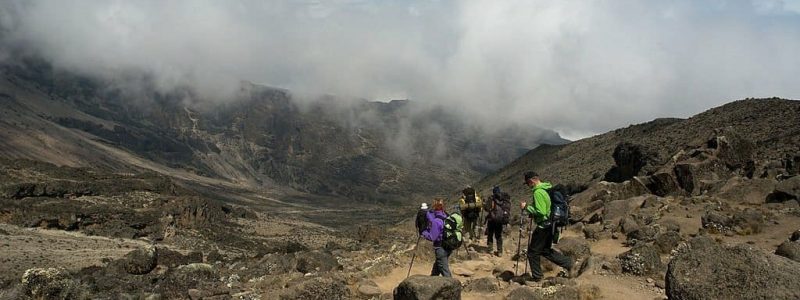
Trek Highlights
Arrival at Machame Camp
Tips for a Successful Trek to Machame Camp
This first leg is an excellent introduction to the adventure of summiting Mount Kilimanjaro, blending breathtaking natural beauty with the thrill of embarking on one of the world’s most iconic treks.
The second day of the Machame Route takes you from Machame Camp (3,000m/9,800ft) to Shira Camp (3,840m/12,600ft). This trek transitions you from lush moorland to the breathtaking Shira Plateau, offering a mix of stunning landscapes and a more challenging ascent
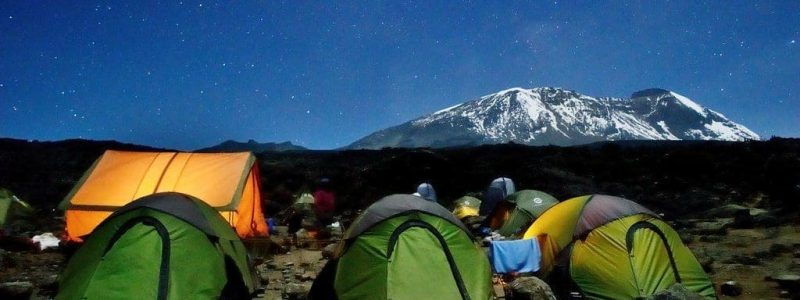
Trek Highlights
Arrival at Shira Camp
Challenges on This Stretch
Tips for a Successful Trek to Shira Camp
The journey to Shira Camp is a rewarding step on the path to Kilimanjaro’s summit, offering unparalleled views and a true sense of adventure
This leg of the Machame Route is a pivotal day for acclimatization and one of the most scenic parts of the journey. Starting from Shira Camp (3,840m/12,600ft), trekkers ascend to the Lava Tower (4,630m/15,190ft) before descending to Barranco Camp (3,960m/12,990ft). The day combines high-altitude trekking, awe-inspiring landscapes, and a gradual introduction to the effects of altitude.

Trek Highlights
Lava Tower Stop
Descent to Barranco Camp
Arrival at Barranco Camp
Challenges on This Stretch
Tips for a Successful Day
This day exemplifies the beauty and challenges of climbing Mount Kilimanjaro, offering trekkers a blend of adventure, acclimatization, and unforgettable views.
The journey from Barranco Camp (3,960m/12,990ft) to Barafu Camp (4,640m/15,223ft) is a pivotal day on the Machame Route, as trekkers transition to the base camp before the summit attempt. This section combines physical endurance with rewarding views and prepares climbers for the final push to Uhuru Peak
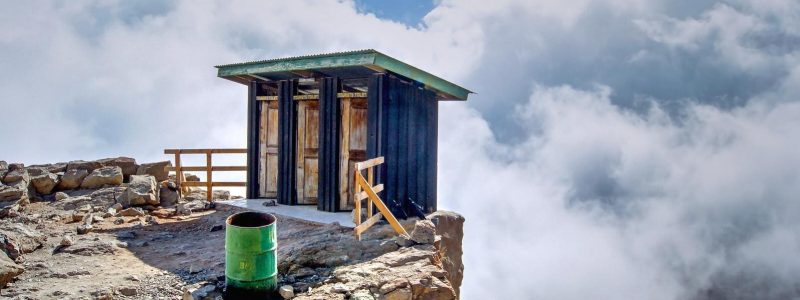
Trek Highlights
Arrival at Barafu Camp
Challenges on This Stretch
Tips for a Successful Trek to Barafu Camp
Reaching Barafu Camp is a major milestone on the Machame Route, signaling that the summit of Mount Kilimanjaro is within reach. This day combines physical challenges, incredible scenery, and the anticipation of standing atop Africa’s highest peak.
The final leg of the Kilimanjaro climb is the most challenging yet exhilarating part of the adventure. It takes you from Barafu Camp (4,640m/15,223ft) to the summit, Uhuru Peak (5,895m/19,341ft), before descending through Millennium Camp (3,820m/12,533ft) to Mweka Gate (1,640m/5,380ft). This epic journey combines the triumph of reaching the top of Africa with the satisfaction of completing the descent.
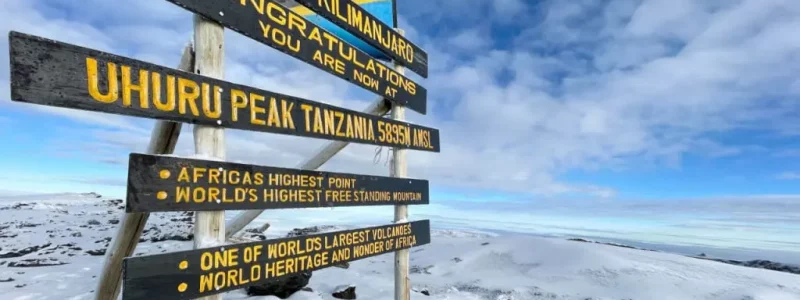
Summit Night: Barafu Camp to Uhuru Peak
Descent to Millennium Camp
Descent to Mweka Gate
Key Challenges and Tips
Summit Night:
Descent:
The ascent to Uhuru Peak and descent to Mweka Gate encapsulate the entire Kilimanjaro journey: physical challenges, mental resilience, and unparalleled rewards. Reaching the summit and safely returning is an accomplishment that leaves a lasting sense of pride and fulfillment.
After your incredible journey up Mount Kilimanjaro, it’s time to rest and reflect on your achievement. After descending to Mweka Gate, you'll be transferred to your hotel to relax and rejuvenate. Spend the day at leisure, enjoying the comfort and warmth of the hotel facilities before your onward trave
Welcome to Tanzania! Upon your arrival at Kilimanjaro International Airport (JRO), a friendly Shiri Adventures representative will greet you and assist with your transfer to your hotel. Relax and settle into your comfortable accommodation, which offers all the essentials you need: Cozy Rooms: Rest well after your journey. Hot Showers: Refresh yourself and unwind. Wi-Fi Access: Stay connected with loved ones. Swimming Pool: Take a dip and start your adventure with relaxation. In the evening, you'll attend a detailed briefing with your guide, ensuring you're fully prepared for the incredible journey ahead. This is also the perfect time to ask questions and finalize any details about your itinerary
The journey from Machame Gate (1,800m/5,900ft) to Machame Camp (3,000m/9,800ft) marks the first leg of the popular Machame Route on Mount Kilimanjaro. Known as the "Whiskey Route," this trail offers trekkers a mix of lush rainforest scenery, gradual ascents, and an exhilarating introduction to the mountain's diverse ecosystems

Trek Highlights
Arrival at Machame Camp
Tips for a Successful Trek to Machame Camp
This first leg is an excellent introduction to the adventure of summiting Mount Kilimanjaro, blending breathtaking natural beauty with the thrill of embarking on one of the world’s most iconic treks.
The second day of the Machame Route takes you from Machame Camp (3,000m/9,800ft) to Shira Camp (3,840m/12,600ft). This trek transitions you from lush moorland to the breathtaking Shira Plateau, offering a mix of stunning landscapes and a more challenging ascent

Trek Highlights
Arrival at Shira Camp
Challenges on This Stretch
Tips for a Successful Trek to Shira Camp
The journey to Shira Camp is a rewarding step on the path to Kilimanjaro’s summit, offering unparalleled views and a true sense of adventure
This leg of the Machame Route is a pivotal day for acclimatization and one of the most scenic parts of the journey. Starting from Shira Camp (3,840m/12,600ft), trekkers ascend to the Lava Tower (4,630m/15,190ft) before descending to Barranco Camp (3,960m/12,990ft). The day combines high-altitude trekking, awe-inspiring landscapes, and a gradual introduction to the effects of altitude.

Trek Highlights
Lava Tower Stop
Descent to Barranco Camp
Arrival at Barranco Camp
Challenges on This Stretch
Tips for a Successful Day
This day exemplifies the beauty and challenges of climbing Mount Kilimanjaro, offering trekkers a blend of adventure, acclimatization, and unforgettable views.
The trek from Barranco Camp (3,960m/12,990ft) to Karanga Camp (3,960m/12,990ft) is a relatively short but rewarding section of the Machame Route, offering a balance of challenging terrain, stunning views, and crucial acclimatization time. This segment allows climbers to rest while progressing towards higher altitudes in preparation for the summit.
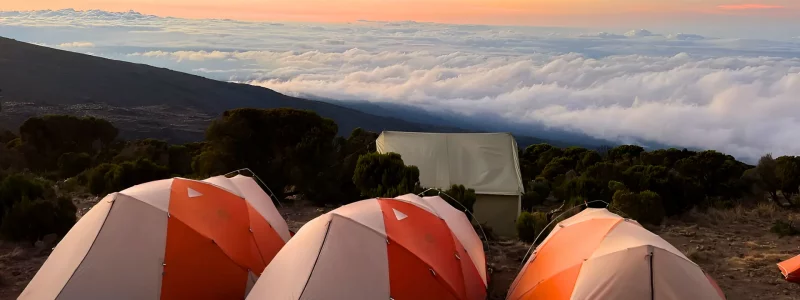
Trek Highlights
Arrival at Karanga Camp
Challenges on This Stretch
Tips for a Successful Trek to Karanga Camp
Trekking from Barranco Camp to Karanga Camp offers an excellent combination of challenges and rewards. It’s a relatively short day that allows you to acclimatize while enjoying breathtaking views and the satisfaction of completing the Barranco Wall. This day prepares you for the higher altitudes ahead as you continue your ascent toward the summit of Mount Kilimanjaro.
The trek from Karanga Camp (3,960m/12,990ft) to Barafu Camp (4,640m/15,223ft) marks a crucial segment of the climb as you ascend toward the summit of Mount Kilimanjaro. This section is challenging yet rewarding, and it plays a vital role in preparing you for the final push to Uhuru Peak.
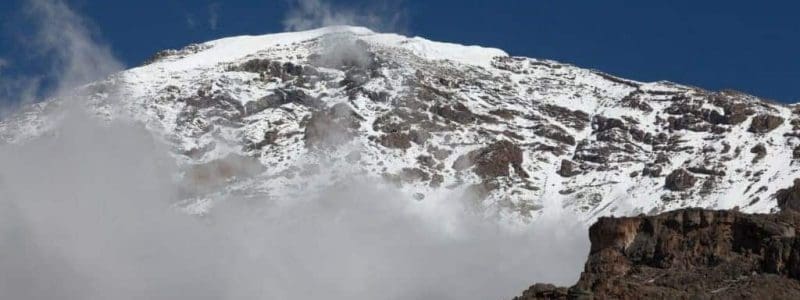
Trek Highlights
Arrival at Barafu Camp
Challenges on This Stretch
Summit Preparation at Barafu Camp
Tips for a Successful Trek to Barafu Camp
The trek from Karanga to Barafu is a pivotal moment in your Kilimanjaro climb. It is relatively short but prepares you for the final push to the summit. The stunning views and challenging terrain set the stage for the last phase of your adventure. After a night’s rest and some final preparations at Barafu Camp, you’ll be ready to make the climb to Uhuru Peak—the pinnacle of Mount Kilimanjaro!
The final leg of the Kilimanjaro climb is the most challenging yet exhilarating part of the adventure. It takes you from Barafu Camp (4,640m/15,223ft) to the summit, Uhuru Peak (5,895m/19,341ft), before descending through Millennium Camp (3,820m/12,533ft) to Mweka Gate (1,640m/5,380ft). This epic journey combines the triumph of reaching the top of Africa with the satisfaction of completing the descent.
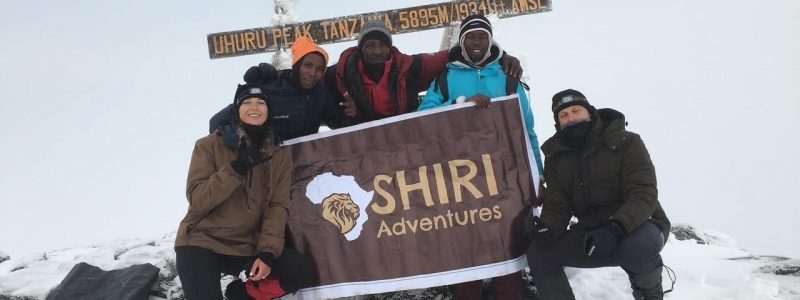
Summit Night: Barafu Camp to Uhuru Peak
Descent to Millennium Camp
Descent to Mweka Gate
Key Challenges and Tips
Summit Night:
Descent:
The ascent to Uhuru Peak and descent to Mweka Gate encapsulate the entire Kilimanjaro journey: physical challenges, mental resilience, and unparalleled rewards. Reaching the summit and safely returning is an accomplishment that leaves a lasting sense of pride and fulfillment.
After your incredible journey up Mount Kilimanjaro, it’s time to rest and reflect on your achievement. After descending to Mweka Gate, you'll be transferred to your hotel to relax and rejuvenate. Spend the day at leisure, enjoying the comfort and warmth of the hotel facilities before your onward trave
Our Kilimanjaro packages cover all transfers outlined in the program. When you arrive at Kilimanjaro, one of our drivers will pick you up in a spacious and comfortable Toyota Alphard and take you to your hotel. Our cars have large trunks that can accommodate plenty of luggage. Inside, you’ll find complimentary bottled water (custom-ordered by Shiri Adventures), a Wi-Fi hotspot, and wet wipes for your convenience. All our cars undergo regular examination and maintenance by our in-house team of technicians.
Our driving team consists of experienced and knowledgeable drivers, all of whom speak fluent English.
For the transfer to the trailhead of your climbing adventure, we will use Toyota Hiace or Coaster, which are better suited for navigating the wilderness terrain en route to Mt. Kilimanjaro. These cars are built to handle rough trails and ensure your safety.
At the end of your journey, we’ll also provide you with a return transfer to the Kilimanjaro International Airport. With our comprehensive package, you can rest easy and enjoy the journey without concerns about your transportation.
For your pre- and post-trek stay, we provide comfortable accommodations at a 3* hotel in Moshi Town. By default, guests are assigned shared double-occupancy rooms, with the option to request a single supplement for added privacy. The hotel offers everything a traveler needs, including professional staff, a restaurant, a swimming pool, comfortable rooms with mosquito nets, laundry service, and complimentary Wi-Fi. It’s the perfect place to relax and unwind before or after your Kilimanjaro trek. Whether you prefer a peaceful, tranquil environment or easy access to local amenities, your accommodation will ensure a convenient and comfortable stay
Our trekking packages provide essential camping equipment to ensure you have a comfortable and safe adventure on Mount Kilimanjaro. This includes tents, sleeping bags, sleeping mats, portable stoves, cooking gear, headlamps, and water containers. All equipment is carefully chosen for durability and functionality, allowing you to focus on your climb without worrying about your gear.
During your Kilimanjaro trek, we provide nutritious, well-balanced meals to keep you energized throughout the journey. Our experienced cook prepares fresh, wholesome meals using locally sourced ingredients. Breakfast typically includes porridge, eggs, fruits, and toast, while lunch and dinner feature a variety of hearty dishes such as pasta, rice, beans, soups, and meats. Snacks like granola bars and fruit are also provided between meals. Special dietary requirements can be accommodated with prior notice to ensure you have an enjoyable and satisfying trekking experience.
Our Kilimanjaro trekking package includes a team of highly experienced and professional guides and porters to ensure your safety and comfort throughout the climb. The guides are certified, knowledgeable about the mountain, and skilled in navigating its challenging terrain. They provide support, share valuable information about the route, and ensure your well-being during the trek. Our porters are responsible for carrying your gear, setting up camp, and maintaining camp logistics, allowing you to focus on your ascent. Both guides and porters are trained to deliver exceptional service, making your trek an unforgettable experience
For your safety and well-being during the Kilimanjaro trek, oxygen tanks are included in the trekking package. These are available in case of emergencies or if you experience altitude-related issues, such as shortness of breath or fatigue. The use of oxygen tanks helps climbers acclimatize better and ensures a safe ascent, especially at higher altitudes like above 15,000 feet. Our guides are trained to use the oxygen tanks when necessary and will monitor your condition closely throughout the climb.
To ensure your safety during the Kilimanjaro trek, GPS trackers are included in the trekking package. These devices are used to monitor your progress and track your location in real-time. They provide an added layer of security, allowing the trek leader and support team to monitor your movement throughout the climb. In case of emergencies or deviations from the planned route, the GPS tracker helps quickly identify your location, ensuring a swift response. This technology ensures that you are always connected and supported, adding peace of mind during your adventure
Our Kilimanjaro trekking package prioritizes your health and safety by including thorough medical check-ups before the trek begins. Our team provides fully-loaded medical kits with necessary supplies to handle common trekking ailments or emergencies. Additionally, an in-company doctor is available to monitor climbers’ health, especially during the ascent, to ensure proper acclimatization and address any medical concerns promptly. This comprehensive approach ensures you’re well-prepared for the trek and can focus on your adventure with peace of mind
Throughout your Kilimanjaro trek, you’ll have access to 24/7 support via satellite phone, ensuring constant communication even in remote areas. This service allows you to stay connected with the base team, providing peace of mind in case of emergencies or unexpected situations. The satellite phone ensures that, no matter where you are on the mountain, help is always just a call away, making your trek safer and more secure
Our Kilimanjaro trekking package includes fully-loaded medical kits, stocked with all the essential supplies to handle common trekking injuries and altitude-related health issues. The kits contain items such as pain relievers, anti-inflammatory medications, bandages, antiseptics, and other first-aid necessities. These kits are carried by the guides and available at all times during the trek to ensure prompt response to any medical needs, giving you confidence and peace of mind as you make your way up the mountain
Our Kilimanjaro trekking package includes all necessary park fees and taxes, ensuring a hassle-free experience. These fees cover your entrance to Kilimanjaro National Park, conservation efforts, and maintenance of the trekking routes. They also contribute to the preservation of the mountain’s unique ecosystem and wildlife. With these fees included in your package, you can focus on your climb without worrying about additional costs, as everything needed to access and enjoy the park is taken care of for you
Our Kilimanjaro trekking package provides you with a dedicated support team to ensure a smooth and successful adventure. From the moment you arrive, our experienced team of guides, porters, and support staff is at your service. They are trained to provide assistance with everything from gear management to health and safety, offering personalized support at every stage of the trek. This team’s primary goal is to ensure your comfort, well-being, and success as you tackle Kilimanjaro’s challenging routes. With their expertise, you’ll feel supported and well cared for throughout your journey
International flights to and from Tanzania are not included in the Kilimanjaro trekking package. It is the responsibility of the traveler to book and arrange their own flights. However, we are happy to assist with recommendations on the best flight options or provide guidance on the nearest airport, Kilimanjaro International Airport (JRO), for a smooth arrival and departure
Tips to the climbing crew (guides, porters, and cooks) are not included in the Kilimanjaro trekking package. It is customary to offer gratuities for excellent service, and the amount is generally at your discretion, based on the level of satisfaction with the crew’s assistance. Typically, tips are shared among the entire team, and our team will guide you on appropriate tipping guidelines. Tipping is a great way to show appreciation for the hard work and dedication of the crew throughout the trek
The visa fee for entering Tanzania is not included in the Kilimanjaro trekking package. Travelers are responsible for obtaining their own visa prior to arrival, unless they come from a visa-exempt country. The visa fee can be paid online or upon arrival at Kilimanjaro International Airport (JRO), depending on your nationality. We recommend checking the visa requirements for your country before your trip and ensuring all necessary documentation is in order
Personal gear rentals, such as jackets, boots, sleeping bags, and other essential trekking equipment, are not included in the Kilimanjaro trekking package. However, we offer the option to rent high-quality gear through our partner stores in Moshi. You can choose from a variety of equipment suited to your needs, ensuring you’re fully prepared for the trek. We recommend renting gear ahead of time to ensure availability and fit. Our team can assist with gear recommendations and rental arrangements
Travel insurance is not included in the Kilimanjaro trekking package. We strongly recommend that all trekkers obtain comprehensive travel insurance before embarking on their journey. This should cover potential issues such as trip cancellations, medical emergencies, evacuation, and lost baggage. Insurance can provide peace of mind and protection against unforeseen circumstances, ensuring you’re covered for any unexpected situations during your trek. We can offer guidance on the types of insurance that best suit your needs
Lunch and dinner at the hotel are not included in the Kilimanjaro trekking package. While breakfast is provided as part of your accommodation, meals beyond that, such as lunch and dinner, are typically at your own expense. However, the hotels we partner with offer a variety of delicious meal options, and we can assist with recommendations for local restaurants or in-hotel dining. You may also choose to purchase full-board or half-board options for additional meal coverage at the time of booking

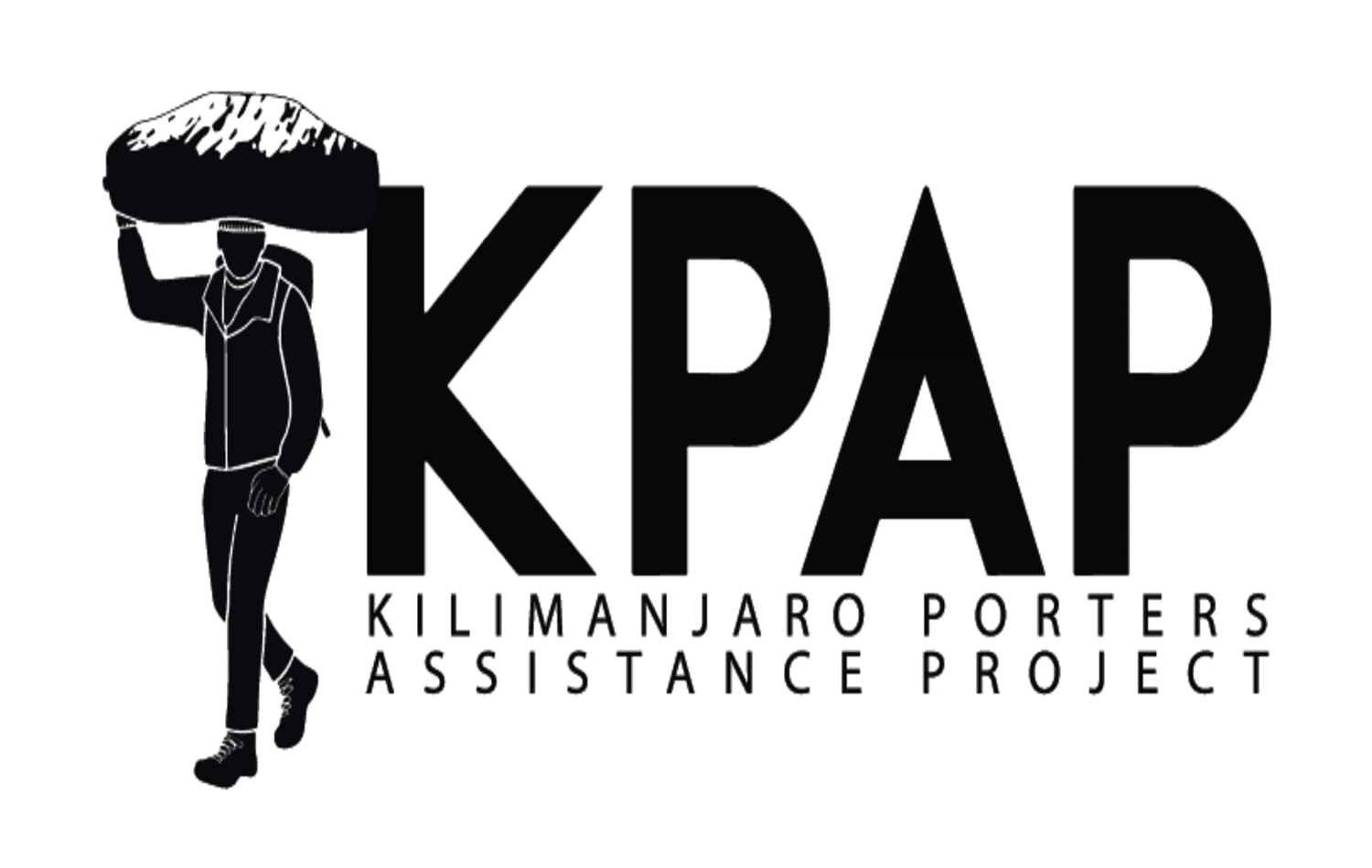

© 2025 Shiri Adventures